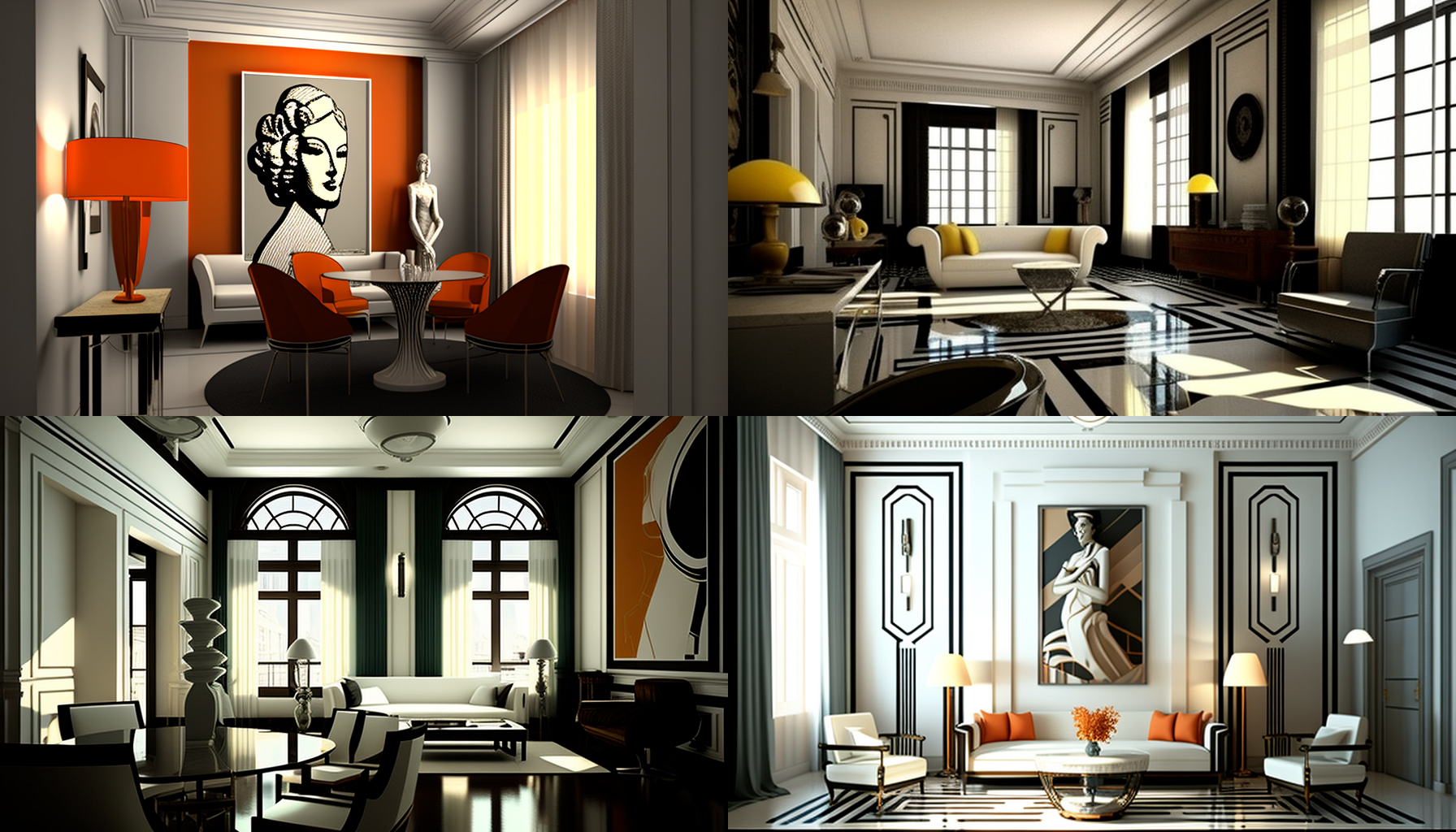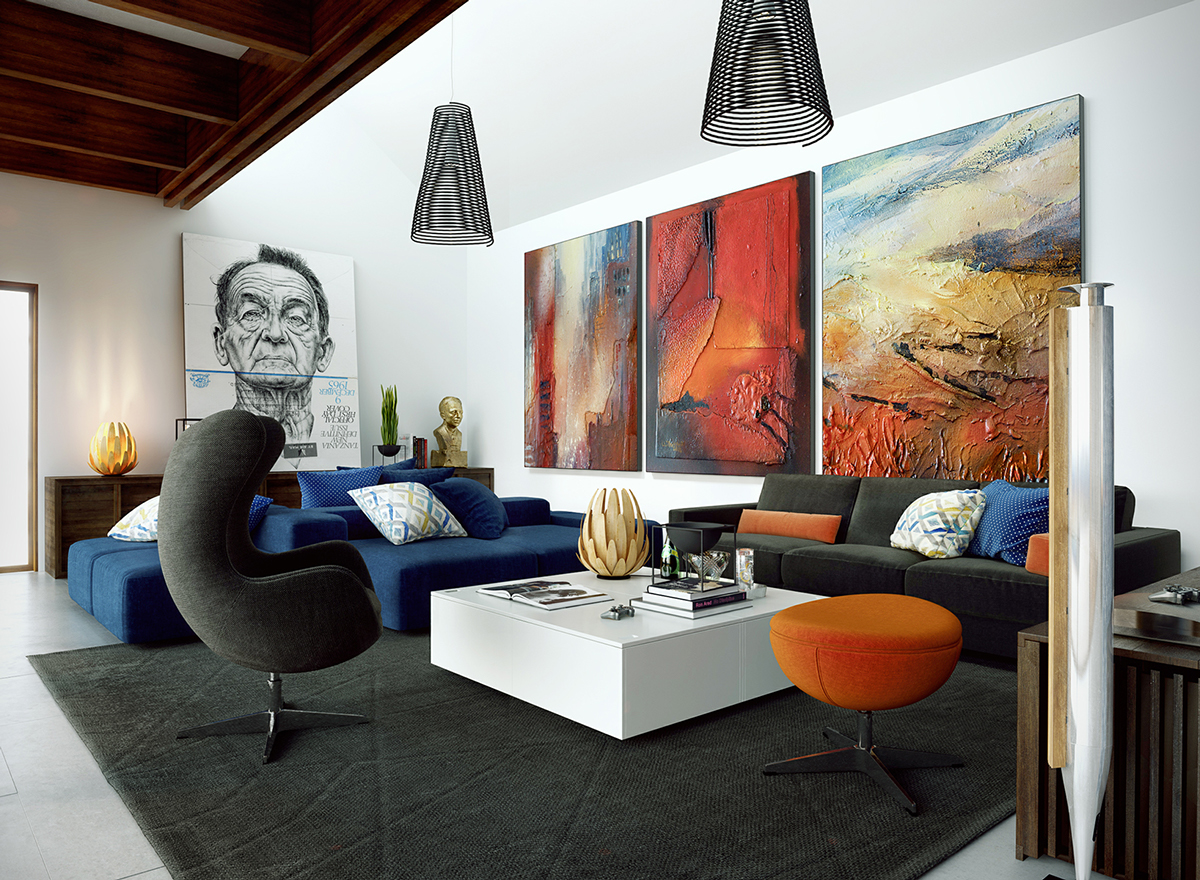Defining Art Moderne Interior Design

Art moderne interior design – Art Moderne, a distinctive style that emerged in the 1920s and flourished in the 1930s, is characterized by its sleek, streamlined forms, geometric shapes, and bold colors. Rooted in the Art Deco movement, Art Moderne embraced a futuristic aesthetic, reflecting the optimism and technological advancements of the era.
Art moderne interior design, with its sleek lines and geometric forms, requires precise planning and execution. Interior design drawing is essential for capturing the intricate details and ensuring a cohesive aesthetic. The drawings serve as a blueprint for the arrangement of furniture, lighting, and accessories, ensuring that the final result reflects the intended design vision.
Key features of Art Moderne interior design include the use of geometric shapes, such as circles, squares, and triangles, often combined with curves and streamlined forms. Bold colors, such as black, white, red, and blue, were frequently used to create striking contrasts and visual impact. The emphasis on functionality and efficiency is also evident in Art Moderne interiors, with furniture and décor designed to be both stylish and practical.
Art moderne interior design is characterized by its sleek lines, geometric shapes, and use of bold colors. This style is often associated with the 1920s and 1930s, and it is still popular today for its timeless elegance. If you are looking for inspiration for your own home, be sure to check out some of the best interior design ideas online.
You can find a variety of resources that will help you create a beautiful and stylish space that reflects your own personal taste.
Influences
Art Moderne was influenced by various artistic and cultural movements, including Cubism, Futurism, and Bauhaus. Cubism’s geometric forms and fragmented planes can be seen in Art Moderne’s angular shapes and abstract compositions. Futurism’s fascination with speed and technology is reflected in Art Moderne’s streamlined forms and dynamic curves. Bauhaus’s emphasis on functionality and mass production influenced Art Moderne’s focus on practicality and efficiency.
Iconic Examples
Notable examples of Art Moderne buildings and interiors include the Chrysler Building in New York City, the Hoover Building in London, and the Streamline Moderne style of the 1933 Chicago World’s Fair. These structures showcase the distinctive characteristics of Art Moderne, with their sleek lines, geometric forms, and bold colors, exemplifying the style’s futuristic and modernistic spirit.
Applying Art Moderne Principles to Interior Design

Incorporating Art Moderne elements into contemporary interior spaces requires a keen eye for detail and an appreciation for the movement’s distinctive aesthetic. Here’s a comprehensive guide to help you achieve a cohesive Art Moderne interior scheme:
Choosing Furniture
- Select furniture with clean lines, geometric shapes, and streamlined silhouettes.
- Opt for pieces with contrasting materials, such as wood, metal, and glass.
- Consider furniture with built-in storage or multi-functional features to maximize space.
Lighting, Art moderne interior design
- Incorporate a mix of natural and artificial light to create a bright and airy atmosphere.
- Use fixtures with geometric shapes or stylized designs.
- Consider concealed lighting or indirect lighting to enhance the mood and create a sense of drama.
Accessories
- Accessorize with geometric patterns, bold colors, and metallic accents.
- Display artwork that reflects the Art Moderne aesthetic, such as abstract paintings or sculptures.
- Add mirrors with geometric frames or bevelled edges to create a sense of space and reflect light.
Color, Texture, and Pattern
- Use a neutral color palette as a base, such as white, gray, or beige.
- Incorporate accent colors through furniture, accessories, or artwork.
- Experiment with different textures, such as smooth leather, plush velvet, or textured wallpaper.
- Add geometric patterns to textiles, rugs, or wallpaper to create visual interest.
Exploring Art Moderne Interiors through Visuals: Art Moderne Interior Design

Art Moderne interiors can be explored through various visual mediums, providing insights into their distinctive features and historical context. These include collections of images showcasing real-life interiors, mood boards capturing the essence of the style, and high-resolution galleries highlighting key details.
By examining these visuals, we can gain a deeper understanding of the Art Moderne aesthetic and its impact on interior design.
Table of Art Moderne Interiors
The following table presents a collection of Art Moderne interiors, each with an accompanying image, description, and historical context:
| Image | Description | Historical Context |
|---|---|---|
| [Insert image of the Streamline Moderne interior of the Chrysler Building] | The Chrysler Building in New York City, designed by William Van Alen, exemplifies the Streamline Moderne style with its sleek lines, geometric forms, and Art Deco influences. | Completed in 1930, the Chrysler Building was a landmark achievement in Art Moderne architecture and remains an iconic symbol of New York City. |
| [Insert image of the Art Moderne interior of the Hoover House] | The Hoover House in Palo Alto, California, designed by Frank Lloyd Wright, showcases the influence of Art Moderne on residential architecture. | Built in 1937, the Hoover House features curved walls, built-in furniture, and a harmonious blend of natural and industrial materials. |
| [Insert image of the Art Moderne interior of the Normandie ocean liner] | The Normandie ocean liner, designed by René Prou, was renowned for its luxurious and Art Moderne-inspired interiors. | Launched in 1935, the Normandie was one of the most technologically advanced and stylish ships of its time, setting new standards for maritime design. |
Mood Board for Art Moderne Interior Design
A mood board can visually capture the essence of Art Moderne interior design by combining images, colors, textures, and patterns that represent the style.
The following mood board showcases the key elements of Art Moderne interiors:
- Streamlined silhouettes
- Geometric shapes
- Bold colors
- Metallic accents
- Luxurious materials
Gallery of Art Moderne Interior Details
A gallery of high-resolution images can provide a detailed look at the key features and details of Art Moderne interiors.
The following gallery showcases examples of:
- Curved walls
- Built-in furniture
- Geometric patterns
- Art Deco influences
- Use of natural and industrial materials